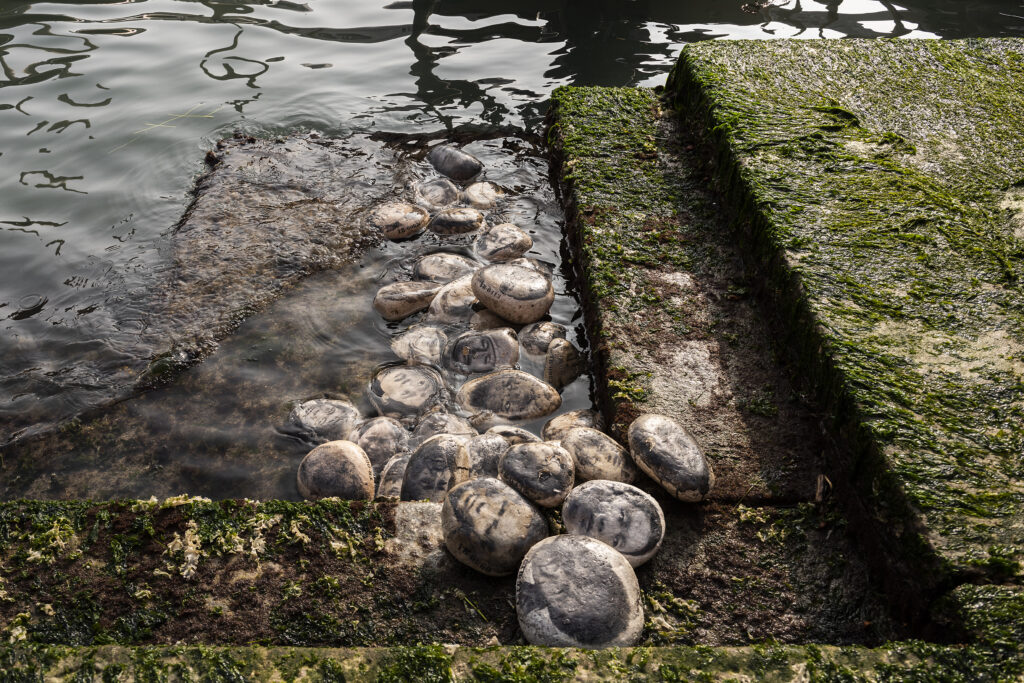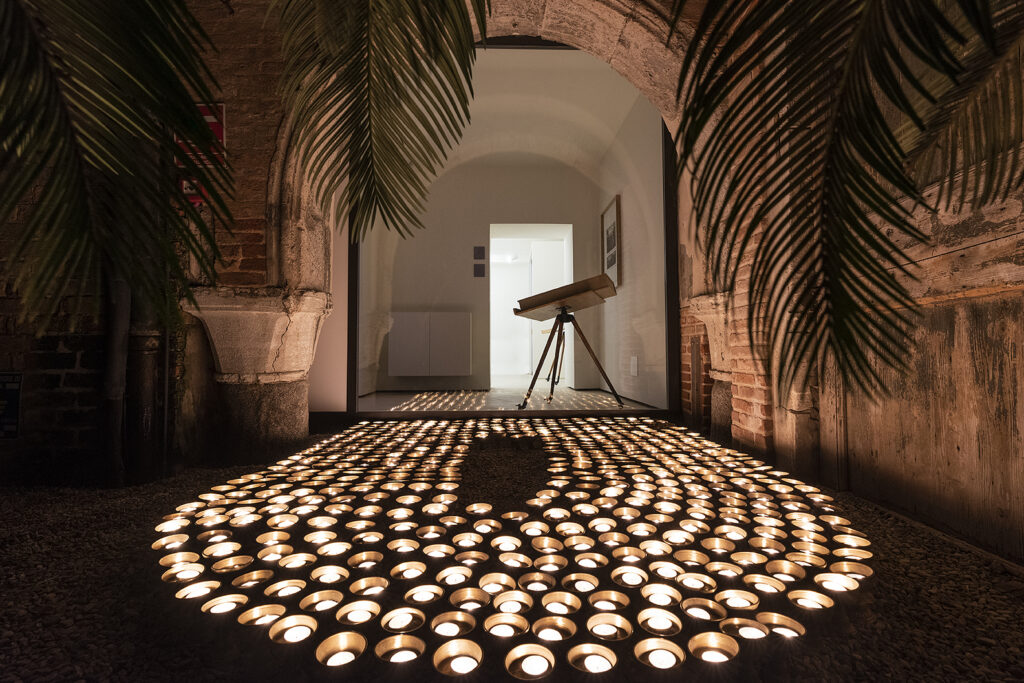



GAO BO 高波 I OFFERTA
GAO BO
ARRIVAL IN VENICE
Being a foreigner always imposes ambiguity in terms of visibility: the foreigner is often recognisable by their clothing, appearance, certain behaviours. At the same time, the foreigner is also invisible from the viewpoint of their rights, or their political status. This is the dimension in which Gao Bo moves, amplifying this exceptional status of artist, of which more will be said later. A stranger on a journey, who with every step, every metre travelled, takes a different view, able to discover and unravel.
In many of his works Gao Bo occupies the border between the visible and the invisible, between the image showing itself and becoming opaque, between the erasure and the return to the light and to the viewer’s gaze.
Gao Bo reached Venice laden with many stories, completing a circular journey between Europe and Asia, a journey reflecting those of many Europeans and many Asians, who over the centuries have travelled through the two continents, bringing them into contact with each other. History is a chronicle of the concerns and the wonder of these journeying people. The shape of this journey is therefore circular, since in its arrival there is already a return, the same shape as the mandala, with all the interlinked spiritual and universal meanings carried along with it.
Gao Bo’s mandala includes a passage over water, and once again exposure and removal, disappearance and visibility. The stones from Mandala Offering, Tibet turn like rosary beads, like the tesserae of a mosaic spread through the earth’s regions, like the unearthed bones of the vast, gigantic body of the planet’s sorrows, like tears falling on the opaque surface of the lagoon, creating ever-widening circles. But also like the notes of a consoling song, because the story, whether created with images, with bodily action or the sounds of words, is already healing, already redemptive. And however wide the surface illuminated by the shape of the art, in its symbolic, tangible or immaterial existence, just so deep will be the power of this connection.
The ritual stones Gao Bo uses to build the brittle, transient edifice, in which time inhabits space, form an offering to the world, a great, open mandala, a celebration in continuous production, because the end is also the beginning, and arrival in Venice is also a return to Himalaya.
Pietro Gaglianò

